Five "Golden Rules" of Cave Diving

| Cave Formation | |||
| Training & Safety | |||
| Equipment | |||
| Projects | |||
| Papers | |||
| Photos | |||
| Video | |||
| Links | |||
| Contact Us | |||
The accident analysis found HERE resulted in the five "golden rules" for safe cave diving.
|
||||
|---|---|---|---|---|
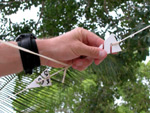 |
All cave divers should be trained specifically for cave diving - training for ocean diving is not sufficient, and many ocean divers, including instructors, have died in caves |
All exploration divers have "Full Cave" certifications from the National Association for Cave Diving or the National Speleological Society Cave Diving Section, and additional specialty training |
||
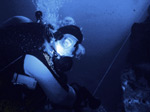 |
Diving deeper than 40 meters in caves should be avoided - the nitrogen in air acts as a narcotic at high pressures, diminishing the diver's judgment and performance. | Our policy is not to dive deeper than 30 meters in caves without using special helium/oxygen breathing mixtures and not to dive deeper than 40 meters in caves at all. | ||
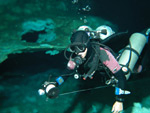 |
At all times a continuous guideline should be run from open water so that divers can use this to find their way out of the cave. | Our policy is to use a continuous guideline at all times. We will install a proper permanent guideline in all caves, starting approximately one meter from open water. | ||
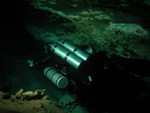 |
One third of each diver's air should be used to enter the cave, leaving one third for exiting the cave and one third for emergencies. | Our policy is to use at most one third of air for entry, and only one quarter where conditions are difficult, such as during initial exploration. | ||
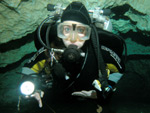 |
Every diver should carry one main light and two backup lights. | This is our minimum requirement. On very long penetration dives, each team also carries an additional main light for increased safety. | ||
